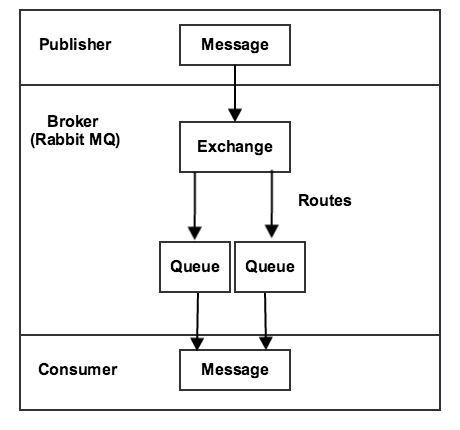Message Queues Overview
The Message Queue Framework (MQF) is a system within Magento Commerce that allows a module to publish messages to queues. It also defines the consumers that will receive the messages asynchronously. The MQF uses RabbitMQ as the messaging broker, which provides a scalable platform for sending and receiving messages. It also includes a mechanism for storing undelivered messages. RabbitMQ is based on the Advanced Message Queuing Protocol (AMQP) 0.9.1 specification.
The following diagram illustrates the Message Queue Framework.

-
A publisher is a component that sends messages to an exchange. It knows which exchange to publish to and the format of the messages it sends.
-
An exchange receives messages from publishers and sends them to queues. Although RabbitMQ supports multiple types of exchanges, Magento uses topic exchanges only. A topic includes a routing key, which contains text strings separated by dots. The format for a topic name is
string1.string2…, for example,customer.createdorcustomer.sent.email.The broker allows you to use wildcards when setting rules for forwarding messages. You can use an asterisk (
*) to replace one string or a pound sign (#) to replace 0 or more strings. For example,customer.*would filter oncustomer.createandcustomer.delete, but notcustomer.sent.email. Howevercustomer.#would filter oncustomer.create,customer.delete, andcustomer.sent.email. -
A queue is a buffer that stores messages.
-
A consumer receives messages. It knows which queue to consume. It can map processors of the message to a specific queue.
A basic message queue system can also be set up without using RabbitMQ. In this system, a MySQL adapter stores messages in the database. Three database tables (queue, queue_message, and queue_message_status) manage the message queue workload. Cron jobs ensure the consumers are able to receive messages. This solution is not very scalable. RabbitMQ should be used whenever possible.
See Configure message queues for information about setting up the message queue system.